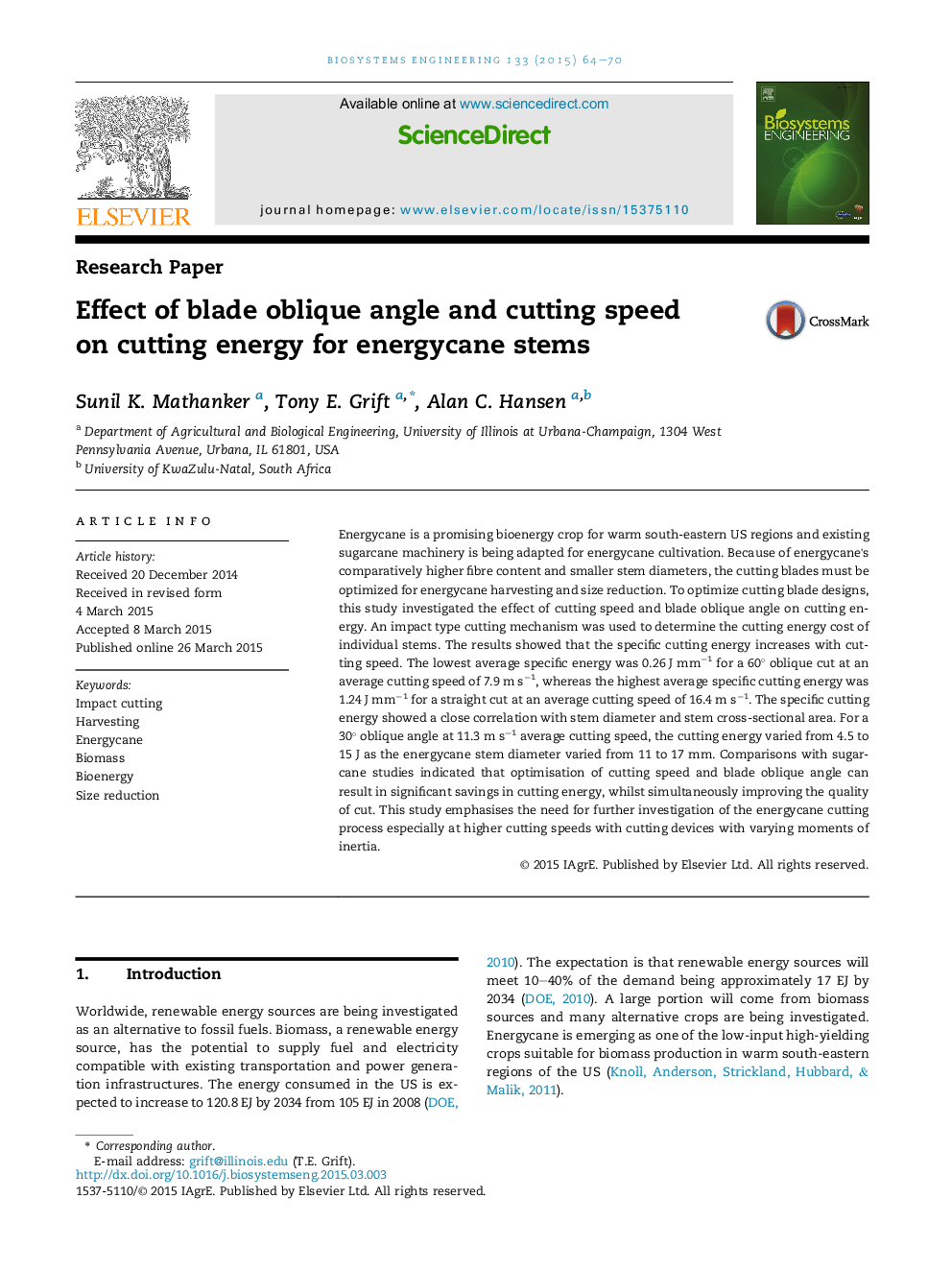| Article ID | Journal | Published Year | Pages | File Type |
|---|---|---|---|---|
| 1711035 | Biosystems Engineering | 2015 | 7 Pages |
•Blade oblique angle and cutting speed significantly affected energy requirements.•Lowest cutting energy was 0.26 J mm−1; 60° oblique cut at 7.9 m s−1 cutting speed.•Highest cutting energy was 1.24 J mm−1; straight cut at 16.4 ms−1 cutting speed.•Optimisation of cutting parameters can produce significant energy savings.
Energycane is a promising bioenergy crop for warm south-eastern US regions and existing sugarcane machinery is being adapted for energycane cultivation. Because of energycane's comparatively higher fibre content and smaller stem diameters, the cutting blades must be optimized for energycane harvesting and size reduction. To optimize cutting blade designs, this study investigated the effect of cutting speed and blade oblique angle on cutting energy. An impact type cutting mechanism was used to determine the cutting energy cost of individual stems. The results showed that the specific cutting energy increases with cutting speed. The lowest average specific energy was 0.26 J mm−1 for a 60° oblique cut at an average cutting speed of 7.9 m s−1, whereas the highest average specific cutting energy was 1.24 J mm−1 for a straight cut at an average cutting speed of 16.4 m s−1. The specific cutting energy showed a close correlation with stem diameter and stem cross-sectional area. For a 30° oblique angle at 11.3 m s−1 average cutting speed, the cutting energy varied from 4.5 to 15 J as the energycane stem diameter varied from 11 to 17 mm. Comparisons with sugarcane studies indicated that optimisation of cutting speed and blade oblique angle can result in significant savings in cutting energy, whilst simultaneously improving the quality of cut. This study emphasises the need for further investigation of the energycane cutting process especially at higher cutting speeds with cutting devices with varying moments of inertia.
Graphical abstractFigure optionsDownload full-size imageDownload as PowerPoint slide
